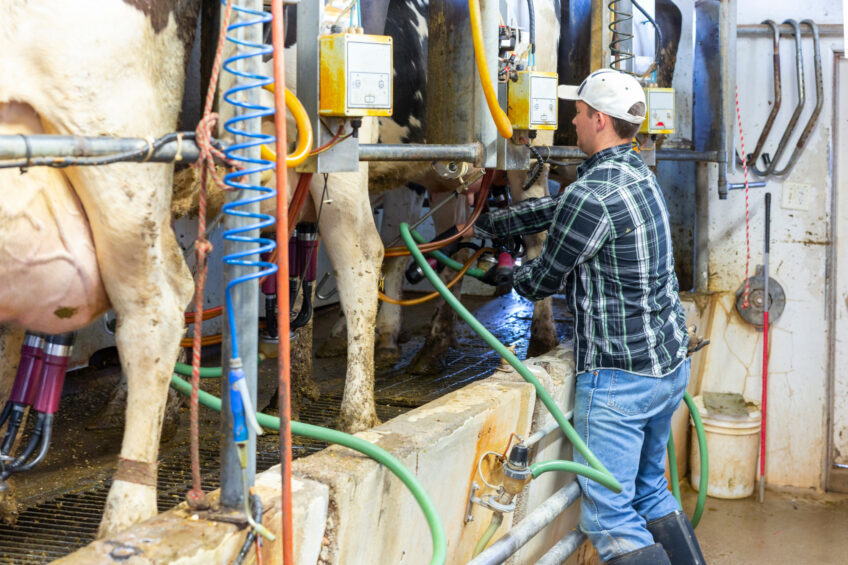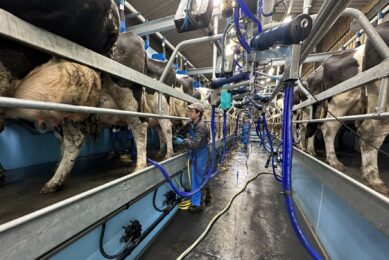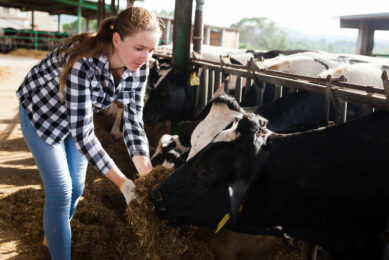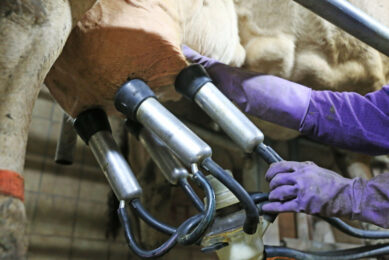From lower SCC to higher milk quality – advantages of a well-trained dairy workforce

Research from Michigan State University has demonstrated that training farm workers significantly enhances their knowledge, job satisfaction, and compliance with milking protocols, leading to improved milk quality, food safety and udder health. In addition, following a proper milking routine proves to be crucial for reducing mastitis.
According to Zelmar Rodriguez, dairy vet and assistant professor at Michigan State University’s College of Veterinary Medicine in the US, both clinical and subclinical mastitis are among the costliest issues in dairy farming, adversely affecting milk quality, yield, and overall profitability. He emphasises that few procedures on a dairy farm can have as profound an impact on reducing mastitis and enhancing food safety and milk quality as a well-executed milking routine.
Rodriguez points out that numerous studies have highlighted the benefits of adhering to a standard milking routine, yet variations in milk quality across farms may partly stem from poor compliance with these protocols. He notes that a significant barrier to effective implementing milking routines is often a lack of understanding among farm personnel regarding the importance of each step in the milking process. “People need to know why they have to do what they have been told to do,” he states.
Return on investment
Research shows that training programmes can positively influence various aspects of dairy operations, ultimately yielding a solid return on investment. Rodriguez explains: “While there’s no one-size-fits-all solution for mastitis management procedures, general training tailored to the farm’s specific needs can have a considerable impact. However, there is limited follow-up assessment of milking routine training programme effectiveness to achieve improved protocol compliance and udder health on dairy farms.”
To address these issues, Rodriguez collaborated with Dr Pamela Ruegg from MSU and Dr Mario Lopez and Dr Marianna Gentilini from DeLaval to conduct an experimental study. They aimed to explore 2 key questions:
- What do farm workers currently know about milking routines, and how much can they learn?
- How does training impact compliance with milking procedures, udder health, and milk quality?
From April to September 2023, Rodriguez visited 16 dairy farms 3 times each. The first visit involved a visual evaluation of the milking parlour, the second included a bilingual training session on milk quality and compliance, and the final visit was a post-training evaluation.
Increase in understanding
The parlour evaluations focused on recording pre-milking preparation times, including the application time of pre-milking teat disinfectant, stimulation time, and overall milking time, while also assessing parlour and operator performance.
The training session covered the causes, identification, and risk factors of mastitis, as well as the reasons for each step in the milking routine on that particular farm. Adjustments to the routine were agreed by workers and employers during the training session based on the first parlour evaluation.
The study included 112 farm workers from 16 dairy farms managing 17,205 cows. The farms utilised parallel or herringbone parlours, with a median herd size of 1,101 cows, ranging from 280 to 2,330 lactating cows, and an average of 15 employees per farm.
Participants showed a notable increase in understanding the importance of following the milking routine, with knowledge scores rising by an average of 18% after training. Group discussions allowed milking technicians, managers, and owners to reach a consensus on critical topics, including how to manage abnormal milk, particularly in mild clinical cases.
Notable improvements
The training proved particularly effective in clarifying the significance of pre-milking teat disinfection and milk let-down processes, with notable improvements observed post-training. Employees rated the training highly beneficial (average score of 4.5 out of 5) in terms of improving their understanding of the milking process, ease of comprehension, and immediate practical applicability in the field.
The training generated a positive impact in milking routine compliance, milk quality and udder health. More time-effective parlour procedures were also achieved after the training session. Inadequate preparation time dropped from 41% of cows to 16%, while insufficient teat coverage decreased from 9.8% to 5.9%. Average stimulation time was reduced to 105 seconds per cow, aligning with the target range of 60 to 180 seconds.
Pre-milking teat disinfection contact time increased by 9 seconds per cow (the recommended time is more than 30 seconds). Milking time was reduced by 25 seconds, most likely due to emphasis during training on avoiding unnecessary reattachment, and special attention if reattachments are set in manual.
Improvements in milk quality
There were also improvements in milk quality and mastitis detection. Bulk tank somatic cell counts stabilised after training, halting a seasonal increase, while a rise in recorded clinical mastitis cases post-training may have been a result of increased emphasis on forestripping as an effective identification method.
Rodriguez concluded that training farm workers generates knowledge, satisfaction, and compliance with milking protocols, ultimately leading to improved milk quality and udder health. “Investing in having a well-trained workforce in your dairy will lead to better job performance and increased job satisfaction.”










